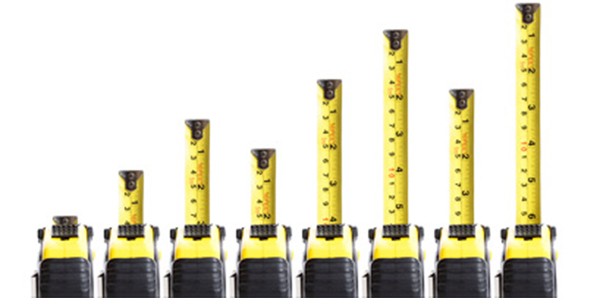
One of the most common failures in the major gift field is the lack of planning for each donor on the MGO’s caseload. You know how it is. You have a vague idea about what you are going to do with this donor or that one. But you don’t write it down. You don’t sequence the plan. And, basically, it’s not strategic.
That is why we came up with the Marketing Impact Chart (MIC) — a detailed annual plan that each Major Gift Officer creates and follows with his or her caseload. At the end of this post I’ll talk a little more about what an MIC looks like.
The MIC is THE tool that can help an MGO maximize the relationship with each of the donors on his or her caseload. It helps the MGO become as intentional as possible – it is a fiscal and communication guide for the year.
Often when we introduce the process of an MIC, MGOs will respond that they are already following a plan. An ask leads to a thank you, which leads to an event, which leads to a face-to-face meeting, etc. However, in our experience, we find that it’s hard to really get to all of the communication intended if it’s not scheduled out ahead of time. Instead, intended communication ends up falling through the cracks.
The ask and the thank you take place and then the donor is forgotten as the MGO pursues other asks and thank yous. Without a plan that is created in advance, most MGOs end up reacting in their relationships with donors (a gift, an invitation that needs to go out) rather than pursuing them and building a true relationship.
The bottom line is that it’s hard to build solid relationships with 75-150 people without a plan. And in the end, the relationship becomes driven by money (the need to ask) rather than by investing in the donor as a person.
The best MICs include all of the following elements:
- Personalized, one-to-one communication
- Specific communication plans that take the donor’s preferences into account
- A healthy cycle of donor communication
- Room for change as a means of honoring the relationship
- Financial goals broken down monthly
Let me explain each of these important elements:
Personalized, One-to-One Communication
As you know, major gift programs are based on a one-to-one approach. This is different from the one-to-many direct mail approach where one bulk message is communicated to a large group of people. In major gifts programs there should be an individual plan FOR EVERY DONOR that is personally created and managed by the MGO. This is an important distinction because some organizations think they are pursuing major gifts by sending specific appeals to their biggest givers. But in reality, these are still direct mail programs because they involve sending one broad message to many people. True major gift strategies always involve personal, individualized communication.
This is one of the reasons that major gift work is so labor intensive—it takes a lot more time to pursue individual strategies with a caseload than just implementing a high-end direct mail program. On any given month, an MGO may be speaking with some people on the phone, asking others via face-to-face meetings, attending an event with others, and sending thank you notes or other mailings that demonstrate the impact of a certain donor’s gift. The caseload is being thanked, asked, called, and met with throughout the month—and each strategy with every donor is different. It’s personal. It’s authentic. And it makes a huge difference.
Donor-Driven Communication
Focusing on the relationship means that the donor—not the major gifts staff—should drive the communication. By this we mean that it is the organization’s responsibility to allow donors to determine their level of involvement and to articulate what programs, people groups or initiatives they are passionate about. In addition, the donor will have clear preferences about how s/he wants to communicate with you. Some people like face-to-face meetings. Others do not. Some people prefer email communication or the phone and others want to receive information in the mail.
The Donor Communication Cycle
If every donor’s calendar of communication looks different, then there is not a single equation that equals healthy communication. However, there are some basic elements that we believe should somehow be expressed to EVERY donor regularly. These include:
- Stating the problem – Clearly articulating the needs, concerns, and the areas that need funding. We call this the “Problem,” but it doesn’t necessarily have to be. It could just be the needs you have in keeping your great work going. Or it could be a project that is underfunded. Regardless, each donor needs to hear about the needs you have (specific to what you know s/he is passionate about) and how s/he can help with the solution.
- Ask – Every donor should be asked at a frequency that fits his/her specific profile and cadence. The ask should be based on what they give to and what their giving preferences are. The ask should be specific and should take their prior giving into account. Every ask will be different, based on the MGO’s relationship with that donor. But an ask is not just sending a proposal with a stamped return envelope. The major donor ask involves really communicating the needs and asking the donor to partner with you in helping with the “problem.” Many MGOs have difficulty with this and actually have an incorrect philosophy when it comes to asking. We can ask appropriately and unapologetically because we know there is a need. Not asking for money or presenting financial needs is actually poor stewardship. How can someone think about what to give if he or she doesn’t know what your financial needs are?
- Thanks – A thank you follows any gift and sometimes just happens spontaneously. It can take any number of forms. It can also be a way to try and contact the donor so you can thank the donor in person and truly express your gratitude for partnering with you in your work.
- Follow Up – In our experience, most non-profits are excellent about getting the money and investing it, but terrible about reporting what the money does. Just as a person would never place his or her money in a fund that does not report back earnings, many donors stop supporting organizations because no one ever told them what their money did! In major gifts fundraising, it is imperative to report back to the donor throughout the year – as often as possible. A donor should regularly hear, in very specific terms, that her giving actually made a difference. This goes beyond the standard thank-you, and few non-profits include this step in their communication plans.
- You Made a Difference – This step is the macro version of the Follow Up. How did the donor’s giving help? How are you growing and what exciting things are happening? One of the major reasons for donor attrition is that the donor is not made aware of the impact of her giving. The result is that she gives elsewhere in order to find that satisfaction. Communicate this to the donors and link your good work and progress to their giving.
Leave Room For Change
One of the most common arguments we hear against completing an MIC is that the plans for donors are always changing. This is true—and that’s as it should be. No relationship follows a step-by-step equation. The MIC is the place that allows you to plan a calendar of communication with each donor so that nothing falls through the cracks. With organizational events, volunteer opportunities, holidays, asks, face-to-face meetings, along with the desire NOT to communicate with your major donors EVERY month, you need to plan.
That being said, your plans will change. As you connect with donors, you’ll learn things that will alter your plans and you must adjust your communication strategy accordingly. The MIC is a fluid document. It needs to be if it is going to honor the donor. But it’s still better to adjust a plan and leave room for change than to have no plan at all.
The Importance of Revenue Goals
I have written a lot here about the communication part of the MIC. But the other primary function the MIC serves is its ability to help you set and track gifts month-to-month. As we stated earlier, the MIC is your communication and FISCAL guide.
It is important that an annual goal is set for each donor so you know how much revenue to anticipate from each donor. This goal should be based on prior giving and capacity—but it needs to be realistic. The goals set for donors will also be used as you forecast revenue, so this is not the place to lean on hopes. You need to set goals based on what you KNOW about each donor, as demonstrated by their past gifts.
In addition, the goal should be broken out monthly, based on each donor’s giving history. So if you have a donor who always gives in December and June, the goals should be allocated for those months. This is important because it allows the MGO to know immediately when a donor has strayed from his or her giving pattern.
Too often we see MGOs tracking giving month to month without any knowledge of donors who are off-pattern. So while $35,000 in revenue may be anticipated in April, you could actually have a donor who made a $5,000 gift that was unexpected and it might cover up two donors $2,500 gifts that were not given. This detail is missed until the mid-year review when you realize giving is down. Setting monthly goals and tracking accordingly helps you stay on top of giving projections and manage donors more precisely.
So, a Marketing Impact Chart for your caseload WILL take you a lot of time to build at first. But once you’ve been through the process, it becomes second nature. The value of tracking giving month-to-month and being more strategic and intentional with your donors is immeasurable.
Time and again we’ve seen loyalty increase, giving grow, and MGOs gain confidence by using an MIC. When you really invest in your donors and build better relationships with them, you look forward to connecting with them. You feel good about your work. And the donors reciprocate. You can create true, authentic relationships with your caseload. We’ve yet to find any MGO who has used the MIC for a year and then trashed it. It’s changed every client’s bottom line for the better because it helps you do your job more efficiently and productively.
So what does an MIC look like? Here’s a simplified sample:

Notice that the donor name, ID, area of interest, communication preference and goal all sit on the left side of the document followed by the moves for every month. On a more complex version of this document the annual goal is also cash flowed.
If you can do this in your current software system, then an excel document is what is required. We can email you a complete sample if you want. Just let us know by clicking here.
The point is that you need to do an MIC for your caseload. It will be good for managing your work AND it will be good for your donors.
Richard







Thanks Richard!
This is an excellent plan and a nice template example as well. You guys are a great resource!
Hi Richard
My team uses the MIC and we love it! It definitely helps us plan and prioritise properly and this helps the funds flow.
My frustration is with the static information in spreadsheet format which is either time consuming to keep fresh or quickly goes out of date. I wonder whether you have seen an MIC being properly managed through a database and how easy this is to implement? I am currently trying to do this although not 100% convinced it’s going to work!
Many thanks
Mary
I second the question above. My concern is that this creates a parallel tracking system where the MGOs are not using the database to track their work.
Paul and Mary: Thanks for writing. IF you can put this system INTO your database – your donor management software – THAT is the preferred solution because then, as you have noted, you only enter information once. Our goal, with many of our clients, is to get the software to work this system. But, failing that, we have found this the only way to make the whole thing work.
Also, while it does seems daunting on the front end, once this is all set up for all the donors on the caseload, it is relatively easy to manage on a going forward basis. It’s getting it set up that is no small task.